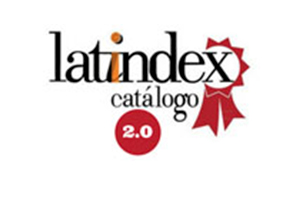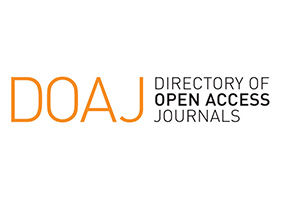The Agency of Ecuador as a Non-Permanent Member of the United Nations Security Council in the Periods 1991-1992 and 2023
DOI:
https://doi.org/10.33304/revinv.v20n1-2025007Abstract
This thesis investigates the participation of Ecuador as a non-permanent member of the United Nations Security Council in the periods of 1991-1992 and 2023. It examines the role of international organizations, especially the Security Council, and how they influence the behavior of a small country like Ecuador, which seeks to maintain a role in the system. The analysis highlights the evolution of the international system from the Cold War to the present, focusing on the effects of polarity and alliances in the decision-making process. Previously, unanimity predominated in the Council voting. Now there is greater discrepancy among the powers, which presents an additional challenge for Ecuador, which seeks to maintain its agency without yielding to external pressures. Throughout the different votes, it can be observed that Ecuador has maintained its policy of non-alignment, based on respect for international law, in order to navigate an ever-changing international system.
Downloads
References
Buzan, B. (2018). Polarity. In Security studies: An introduction (pp. 147-160). Routledge.
Carranco, S. (2023). ¿Qué representa para el Ecuador ser parte del Consejo de Seguridad de la ONU? El Telégrafo. https://www.eltelegrafo.com.ec/noticias/columnistas/15/que-representa-ecuador-ser-parte-consejo-seguridad-onu
Dag Hammarskjöld Library. (n.d.). UN Security Council meetings & outcomes tables. United Nations.
Duffield, J. (2007). What are international institutions? International Studies Review, 9(1), 1-22. https://doi.org/10.1111/j.1468-2486.2007.00706.x
East, M. (1973). Size and foreign policy behavior: A test of two models. World Politics, 25(4), 556-576. https://doi.org/10.2307/2009952
Fabara Espín, J. G. (2021). El Movimiento de los No Alineados (MNOAL) como foro y brújula de las relaciones internacionales. Tsafiqui - Revista Científica En Ciencias Sociales, 12(16), 119–129. https://doi.org/10.29019/tsafiqui.v12i16.884
Foreign Affairs. (2023). The long unipolar movement: Debating American dominance. Council of Foreign Relations, 102.
García Sayán, D. (1988). Relaciones del Perú con Ecuador. In E. Ferrero Costa (Ed.), Relaciones del Perú con los países vecinos (pp. 35–51). CEPEI.
González, J. (2003). Las teorías de la cooperación internacional dentro de las relaciones internacionales. Polis: Investigación y Análisis Sociopolíticos y Psicosocial, 2(3). Universidad Autónoma Metropolitana Unidad Iztapalapa. https://www.redalyc.org/pdf/726/72620305.pdf
Heine, J. (2023). América Latina y el No Alineamiento Activo. Intercambio, Coyuntura Internacional, 61. https://intercambio.pe/america-latina-no-alineamiento-activo/
Hey, J. (2003). Introducing small state foreign policy. In J. Hey (Ed.), Small states in world politics: Explaining foreign policy behavior (pp. 1-11). Lynne Rienner Publishers.
Jatobá, D. (2013). Repensar y rehacer la realidad contemporánea tras la expansión filosófica de las Relaciones Internacionales. Grupo de Estudios de Relaciones Internacionales, 24. https://revistas.uam.es/relacionesinternacionales/article/download/5194/5640/10844
Keohane, R. (1984). After hegemony: Cooperation and discord in the world political economy. Princeton University Press.
Krasner, S. (2010). Desarrollo estatal, construcción del Estado y ayuda externa. Foro Internacional. El Colegio de México.
Lallande, J. P. (n.d.). El liberalismo institucional.
Lozano, A. (2016). Aspectos ontológicos y epistemológicos en las relaciones internacionales: Breves propuestas de abordajes teóricos. Revista Mexicana de Análisis Político y Administración Pública, 5(1).
Malone, D. (2004). The UN Security Council: From the Cold War to the 21st century. Lynne Rienner Publishers.
McGlinchey, S., Mathur, S., & Acharya, A. (2022). Introducing bipolarity, tripolarity, unipolarity, multipolarity, and multiplexity. E-international relations. https://www.e-ir.info/2022/03/27/introducing-bipolarity-tripolarity-unipolarity-multipolarity-and-multiplexity-in-international-relations/
MNOAL. (n.d.). Bandung Principles. https://nam.go.ug/bandung-principles
Pease, K. (2007). Mainstream approaches: Liberalism in international organizations. In Perspectives on governance in the twenty-first century (pp. 58-73). https://doi.org/10.4324/9781351213110
Rodríguez Hernández, L. E. (2014). De la unipolaridad a la multipolaridad del sistema internacional del siglo XXI. Revista de Estudios Estratégicos, 1. https://biblioteca.clacso.edu.ar/Cuba/cipi/20180227121442/Art4.pdf
Velázquez, R. (2011). Cambios y continuidades del sistema internacional. Relaciones Internacionales, 41. https://revistas.unlp.edu.ar/RRIIIRI/article/download/1193/1148/
Downloads
Published
How to Cite
Issue
Section
License

This work is licensed under a Creative Commons Attribution-NonCommercial-ShareAlike 4.0 International License.
This journal provides immediate free access to its content under the principle of making research available to the public free of charge, which fosters a greater exchange of global knowledge. This work is under a Licencia Creative Commons Atribución-NoComercial-CompartirIgual 4.0 Internacional (Creative Commons Attribution-NonCommercial-ShareAlike 4.0 International License) However, any request by the author to obtain permission for their reproduction will be evaluated.










